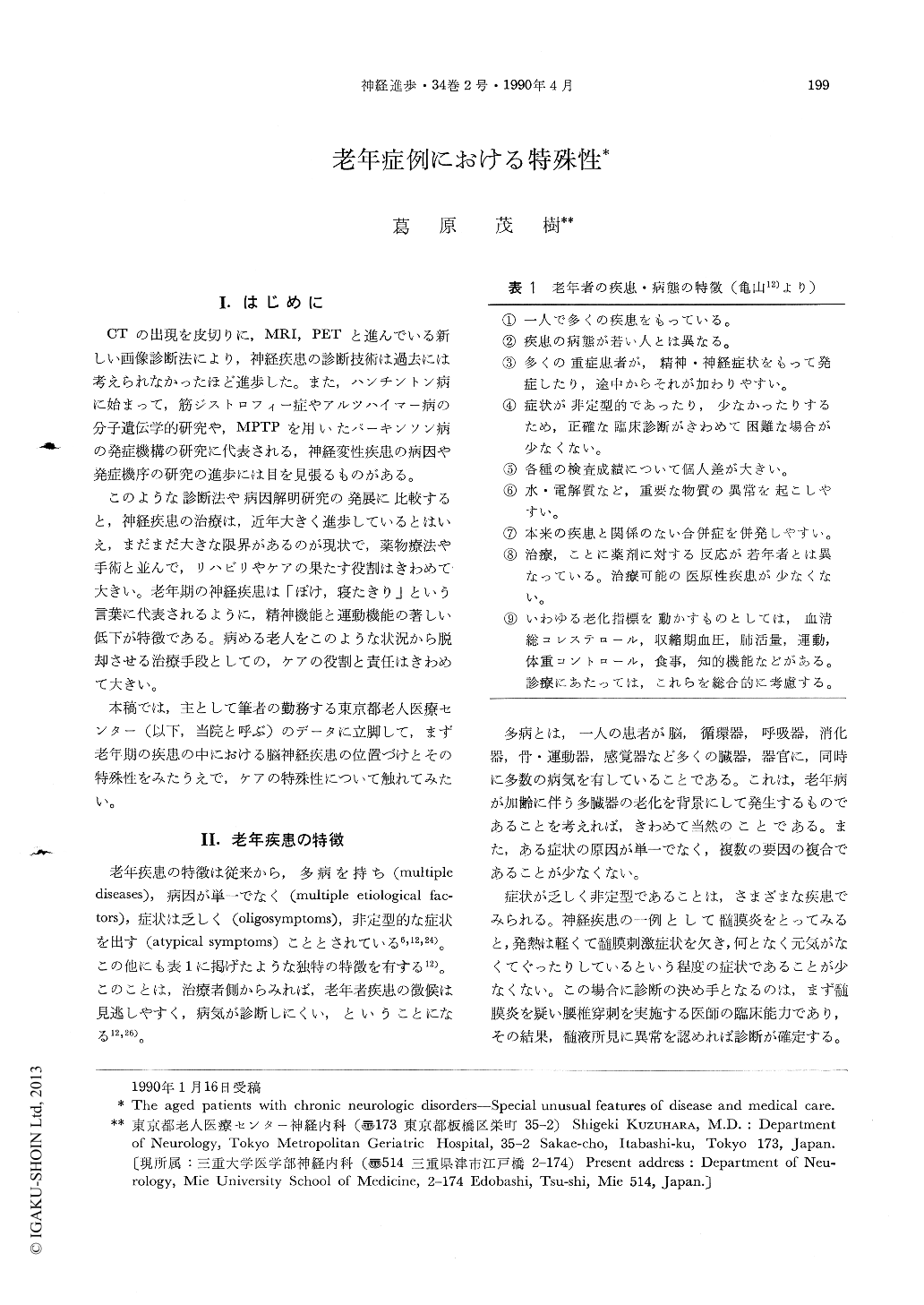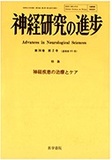Japanese
English
- 有料閲覧
- Abstract 文献概要
- 1ページ目 Look Inside
I.はじめに
CTの出現を皮切りに,MRI,PETと進んでいる新しい画像診断法により,神経疾患の診断技術は過去には考えられなかったほど進歩した。また,ハンチントン病に始まって,筋ジストロフィー症やアルツハイマー病の分子遺伝学的研究や,MPTPを用いたパーキンソン病の発症機構の研究に代表される,神経変性疾患の病因や発症機序の研究の進歩には目を見張るものがある。
このような診断法や病因解明研究の発展に比較すると,神経疾患の治療は,近年大きく進歩しているとはいえ,まだまだ大きな限界があるのが現状で,薬物療法や手術と並んで,リハビリやケアの果たす役割はきわめて大きい。老年期の神経疾患は「ぼけ,寝たきり」という言葉に代表されるように,精神機能と運動機能の著しい低下が特徴である。病める老人をこのような状況から脱却させる治療手段としての,ケアの役割と責任はきわめて大きい。
The majority of old patients suffer from multiple disorders, and the clinical manifestations of the disorders are atypical in comparison with those of younger people; clinical symptoms are often very mild despite of severe abnormalities in the laboratory data, and a single symptom may be the result of multiple etiological factors. According to the data of Tokyo Metropolitan Geriatric Hospital (TMGH), more than 40% of all inpatients had neurologic or psychiatric disorders, and approximately 85% of inpatients had two or more major diseases.

Copyright © 1990, Igaku-Shoin Ltd. All rights reserved.


